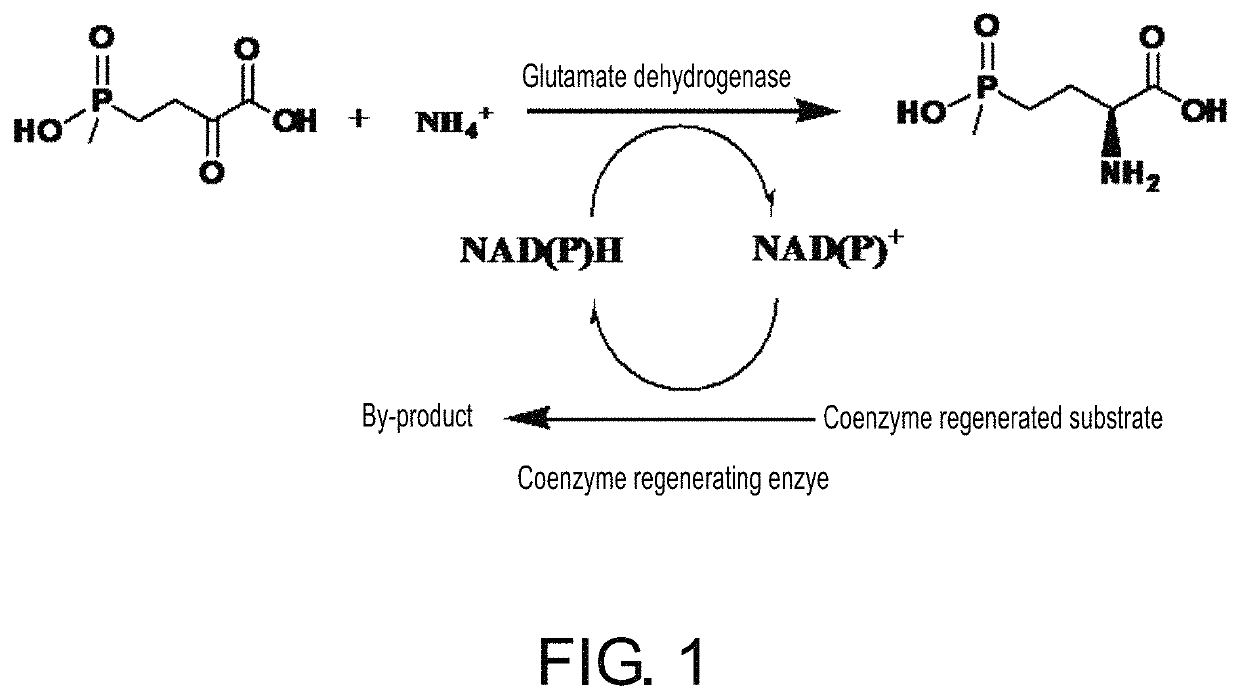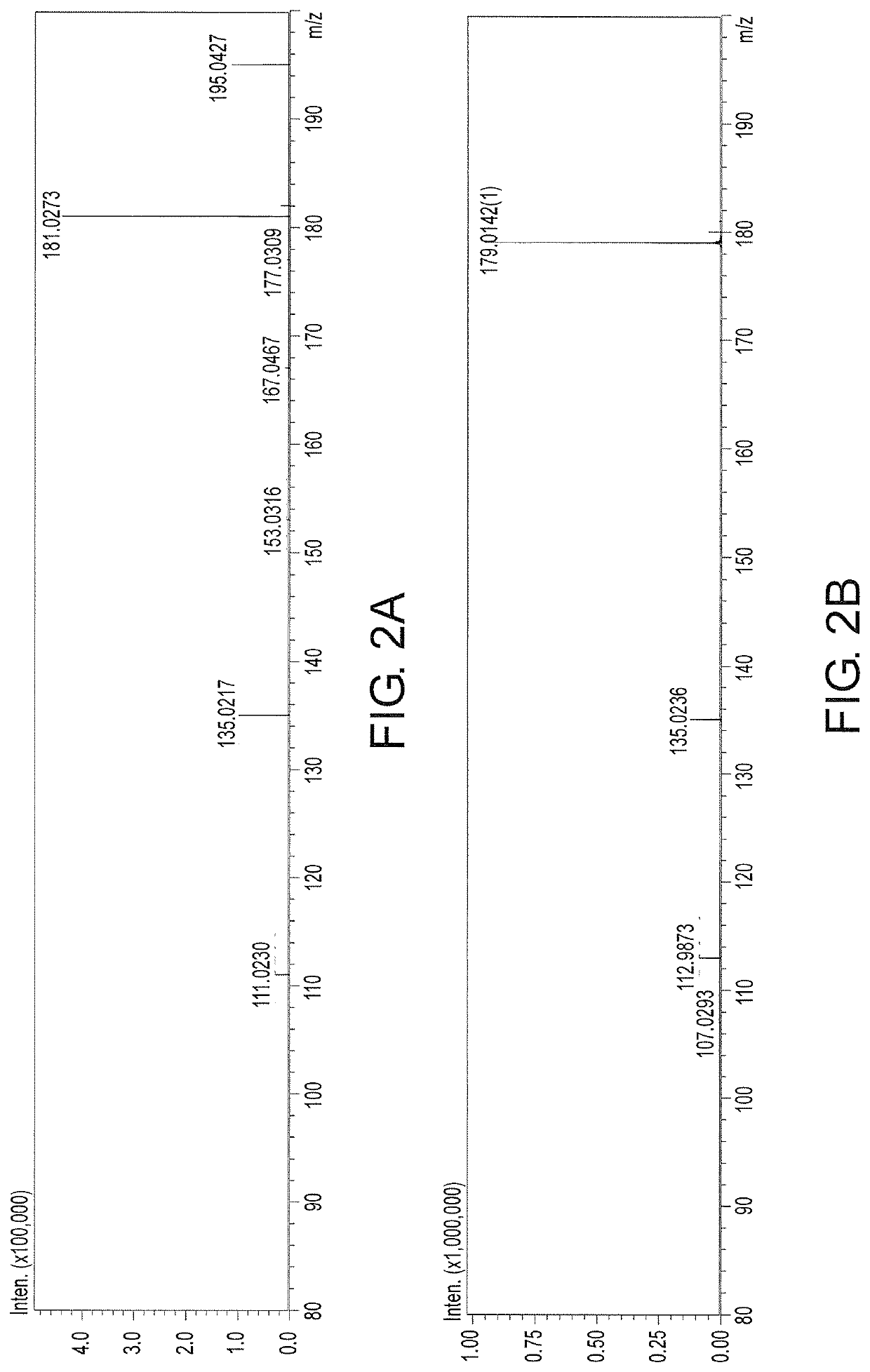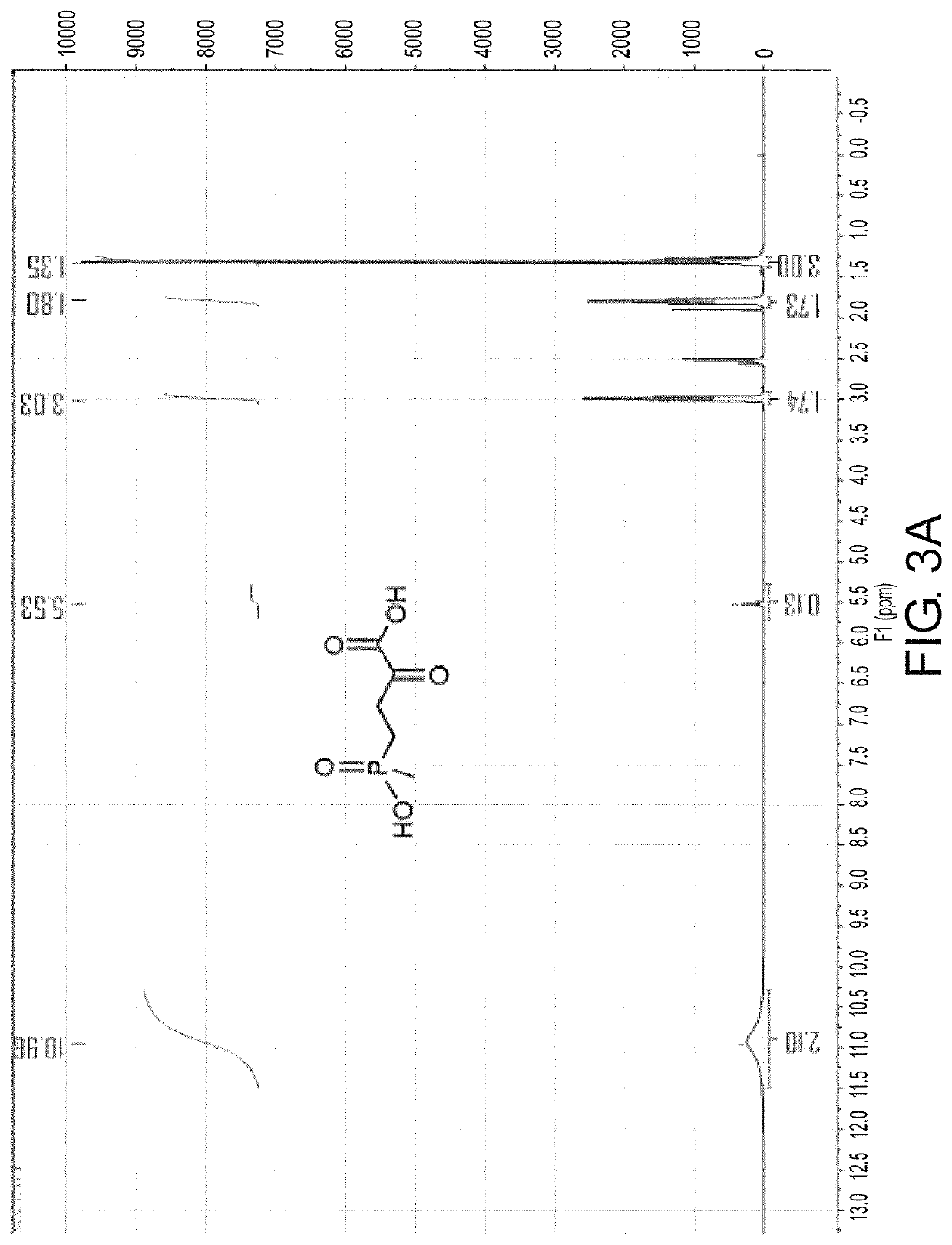Glutamate dehydrogenase mutants and their application in preparation of L-phosphinothricin
a glutamate dehydrogenase and mutant technology, applied in the field of enzyme engineering, can solve the problems of high catalyst preparation cost, difficult downstream process, low enzyme activity of these glutamate dehydrogenases, etc., and achieve low glutamate, improved enzyme activity, and low glutamate.
- Summary
- Abstract
- Description
- Claims
- Application Information
AI Technical Summary
Benefits of technology
Problems solved by technology
Method used
Image
Examples
embodiment 1
Engineering of Glutamate Dehydrogenase from Pseudomonas putida and Catalytic Activity Determination
Step 1: Activation of Recombinant Strain and Plasmid Extraction
[0064]Use LB medium for activation and culture of recombinant Escherichia coli carrying the gene of glutamate dehydrogenase from Pseudomonas putida (PpGluDII) (NCBI Accession No.: NP_742836.1).
[0065]Specific formula for LB culture medium is stated as follows: peptone 10 g / L, yeast powder 5 g / L, NaCl 10 g / L, dissolved in deionized water, and then sterilized at 121° C. for 20 min. Solid culture medium is formed by adding 2% agar into LB liquid medium.
[0066]The preserved PpGluDH recombinant strain is streaked onto the plate containing LB solid medium, and culture at 37° C. for 12 h. Single colony is picked and inoculated into 5 mL LB liquid medium containing 50 μg / mL kanamycin, and then cultured at 200 rpm under the temperature of 37° C. for 12 h. Once the culture is obtained, the plasmid is extracted according to specificatio...
embodiment 2
Step 1: Selection of Glutamate Dehydrogenases
[0088]Select 9 glutamate dehydrogenases of different sources, different coenzyme specificity and different homology with PpGluDH to perform the same protein engineering (for details, please refer to Table 2). Wherein, CgGluDH, PeGluDH and LsGluDH belong to NADPH-specific glutamate dehydrogenases; GsGluDH, BsGluDH, BmGluDH, LsGluDH, CsGluDH and BtGluDH belong to NADH-specific glutamate dehydrogenases.
[0089]
TABLE 2The GluDHs selected for applicability evaluationHomologyCoenzymeDesignationSource(%)NCBI Accession No.SpecificityPpGluDHpseudomonas putida100NP_742836.1NADPHCgGluDHcorynebacterium glutamicum59.0NP_601279.1PeGluDHPseudomonas entomophila93.8WP_044487662.1LsGluDHpLysinibacillus sphaericus54.8WP_012293812.1GsGluDHGeobacillus stearothermophilus29.8WP_033013982.1NADHBsGluDHBacillus subtilis28.8NP_391659.2BmGluDHBacillus megaterium28.2WP_013084905.1LsGluDHLysinibacillus sphaericus29.8WP_012292398.1CsGluDHClostridium symbiosum53.4WP_00349...
embodiment 3
Preparation of L-phosphinothricin by Coupling Wild Type Glutamate Dehydrogenase (PpGluDH) with Glucose Dehydrogenase
[0097]Culture recombinant E. coli expressing glutamate dehydrogenase (PpGluDH) and glucose dehydrogenase (BsGDH-2M, SEQ ID NO. 21) with method in Step 3 of Embodiment 1; proceed with centrifugal collection of cells and ultrasonic cell disruption to prepare crude enzyme solution.
[0098]The final volume of the reaction is 30 mL; each sample contains 500 mM substrate PPO, 600 mM glucose, 250 mM (NH4)2SO4 and 0.5 mM NADP+. Concentration of glutamate dehydrogenase cells (dry weight) is 1.0 g / L; concentration of glucose dehydrogenase cells (dry weight) is 1.25 g / L. Use water bath to control the reaction temperature at 35° C.; titrate ammonia to control pH at 7.5 during the reaction process. Use non-chiral HPLC to determine residual concentration of PPO after reaction for 6 h; meanwhile, use pre-column derivatization HPLC to determine the concentration and ee value of formed L...
PUM
| Property | Measurement | Unit |
|---|---|---|
| temperature | aaaaa | aaaaa |
| concentration | aaaaa | aaaaa |
| retention time | aaaaa | aaaaa |
Abstract
Description
Claims
Application Information
 Login to View More
Login to View More - R&D
- Intellectual Property
- Life Sciences
- Materials
- Tech Scout
- Unparalleled Data Quality
- Higher Quality Content
- 60% Fewer Hallucinations
Browse by: Latest US Patents, China's latest patents, Technical Efficacy Thesaurus, Application Domain, Technology Topic, Popular Technical Reports.
© 2025 PatSnap. All rights reserved.Legal|Privacy policy|Modern Slavery Act Transparency Statement|Sitemap|About US| Contact US: help@patsnap.com



